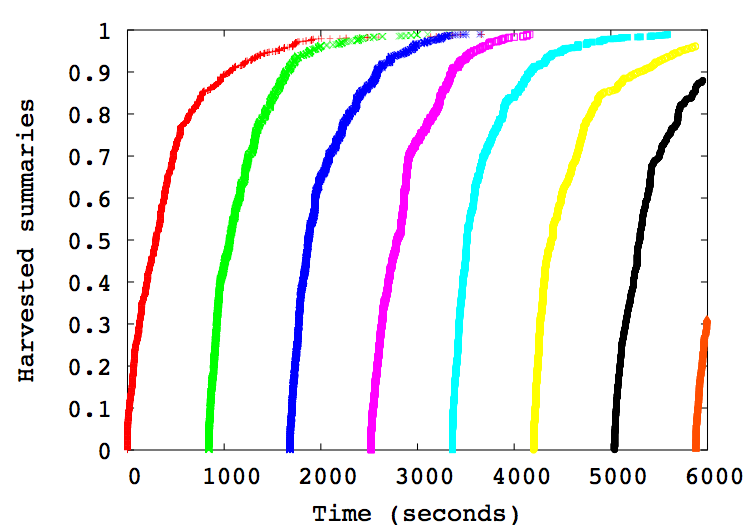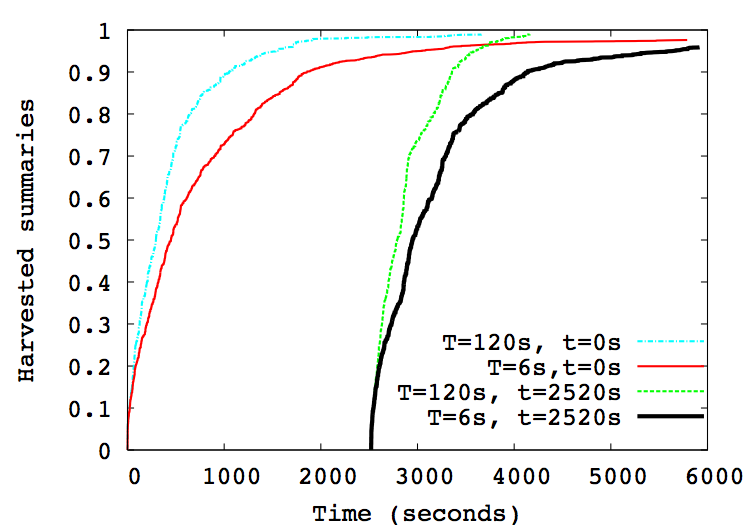In the following, we investigate the stability of MobEyes, by verifying that
continuous summary injections do not influence its performance to a
large extent. In particular, we show that the ratio of summaries
harvested on longer periods remains acceptable and that the
harvesting latency does not grow as time passes. With regard to the
results presented so far, here we remove the assumption about the
single summary generation epoch at t=0. Nodes generate new
summaries with period T=120s and advertise the last generated
summary: let us observe this rate represents a practical worst
case. For the sake of clarity of presented results, we hold the
synchronicity assumption: all nodes simultaneously generate new
summaries at intervals multiple of T. We obtained similar
performance with differently distributed generation intervals, i.e.,
Poisson with average value T but plots are far more jumbled. The
following results are reported for the case of a single harvesting agent,
k=1, N=100, v=15m/s, and nodes moving
according to the RT model. The next Figure plots the
cumulative distribution of the number of summaries generated and
harvested as a function of time (we ran simulations for 6000s).
The graph shows that the harvesting curve tracks the generation
curve with a certain delay, which can be traced to the harvesting
latency in a=1,k=1.
This also motivates
the difference of the endpoints of the two plots.
Next Figure provides further evidence of the
stability of the system; curves show the harvesting latency for
summaries generated during some generation epochs. For the sake of figure
clarity, the graph does not exhaustively represent every generation
epoch, but only samples one generation epoch every T*7=840s till
the end of the simulation time. The different curves show similar
trends, without any performance degradation caused by the increase
of the number of summaries in the network. The harvesting related to
the last summary generation epoch is evidently incomplete (25% of
the summaries are harvested within the timeline), since the epoch
starts 120s before the end of the simulation. These results prove
that MobEyes achieves completeness in harvesting generated summaries
even in practical worst cases.
We also investigated if higher summary generation rates
afflict MobEyes performance. We shortened T from 120s to 6s (with T=6s,
the chunk generation rate is 100ms). Such a generation rate is largely greater than the one required
for the set of applications addressed by MobEyes. Simulation results prove that MobEyes performance
starts degrading only when T < 30s. The next Figure shows the harvesting
process for two epochs (0s and 2520s) and compares T=120s with T=6s.
The second case shows that MobEyes performance degrades gracefully as the
generation epoch shortens, thus demonstrating the high stability of the system
when operating in usual summary rate conditions.





